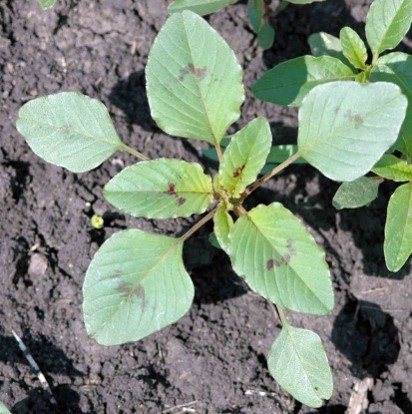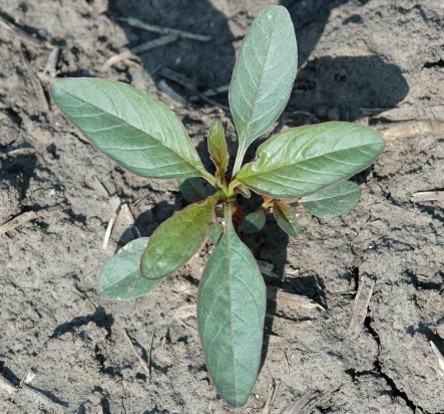By William Curran, Weed Scientist; Dwight Lingenfelter, Program Development Specialist
This is the time of year to try to correctly identify and manage problematic pigweed. In particular, there is great concern for herbicide-resistant Palmer amaranth and waterhemp spreading into our region and on our farms. As seedlings and young plants, they can be difficult to distinguish from our more common redroot and smooth pigweeds. Here are some key distinguishing features:
- Palmer amaranth and waterhemp have smooth stems and petioles with few or no hairs. Presence of hairs on the leaves, stem, and petioles indicates that it is redroot or smooth pigweed.
- The leaf shapes of Palmer amaranth are ovate to diamond shape and widest at the base. This can be similar to redroot or smooth pigweed, although they tend to be more egg shaped and widest in the middle. Palmer amaranth can sometimes also have a single hair on the tip of the leaf blade. The leaf shapes of waterhemp are longer and linear or lanceolate, and generally shiny or somewhat waxy in appearance.
- The petiole is the smaller stem that connects the leaf blade to the main stem. With Palmer amaranth, the petiole is often as long or longer than the leaf blade itself. The petioles of waterhemp are shorter than the leaf blade (maybe one-third to one-half the length). Smooth and redroot pigweed leaf petioles are also usually shorter or the same length as the leaf blade.
- Palmer amaranth plants will develop a rosette-like appearance that looks similar to a poinsettia. The other pigweeds generally do not have this appearance.
- The leaves of some Palmer amaranth plants have a watermark in the shape of a chevron or V. Other pigweeds can also sometimes have this watermark.


If you have pigweeds surviving a post-emergence glyphosate herbicide application, that is a tell-tale sign of resistance and you are likely dealing with Palmer amaranth and/or waterhemp. We have a number of newer educational resources available to help manage these problem pigweeds posted on our website.






Post a comment
Report Abusive Comment